High Atlas Mountains
Best Places To Visit in Atlas Mountains
Little-known because of its relative inaccessibility, the High Atlas Mountains makes up the largest massif in the Atlas chain. It is also the highest mountain range in North Africa. In this geographical isolation Berber culture and identity prospered. Over the centuries, the tribes established their own economic and social framework, and a unique collective way of life, based on blood ties and solidarity.
Extending from the plains of the Atlantic seaboard to Morocco’s border with Algeria, the High Atlas forms an impregnable barrier some 800 km long and, in certain places, 100 km wide. Consisting of great massifs rising to heights of 3,000–4,000 m, and steep valleys, desolate rocky plains and deep narrow canyons, the High Atlas Mountains has played a decisive role in the history of Morocco. From earliest times these mountains have been a place of refuge for populations fleeing from invaders. For centuries, nomads forced northwards by the desertification of the Sahara have come into conflict with the sedentary mountain-dwelling tribes, disputing possession of prized pasture. This tumultuous feudal past led to the development of a strikingly beautiful form of fortified architecture.
Today, although the Berbers no longer need to guard their safety, they still live in tighremts, old patriarchal houses with thick walls. Hamlets built of pisé still cling to mountainsides, while every last plot of land is used to grow barley, corn, maize, turnips, lucerne and potatoes crops that can be cultivated at high altitudes. The Berbers channel river water to irrigate small squares of land and graze their flocks of sheep and goats, which they raise for milk, butter and wool. Sometimes isolated by snowfall in winter, the Berbers of the High Atlas Mountains live and work by the seasons, the constant round of labour punctuated by various festivals
Crowned with high peaks, the chain of the High Atlas Mountains culminates in the west in Jbel Toubkal the highest peak in North Africa at 4,167 metres, with pisé villages nestling on its lower slopes. In the centre, Jbel M’Goun, at 4,068 m, rises over the Tessaout, Ait Bouguemez and Ait Bou Oulli valleys. The only channels of communication between these valleys are mule trails and high passes. On the banks of the wadi that snakes along the valley bottoms, villages cluster around fortified houses, punctuating expanses of cultivated land. The eastern end of the High Atlas Mountains is marked by the imposing outline of Jbel Ayachi, 3,737 m high. Here high desert plateaux stretch to the horizon. From late spring to early autumn they are filled with flocks of grazing sheep.

Berber Villages

Tour of the Jbel Toubkal Massif
Orientral High Atlas
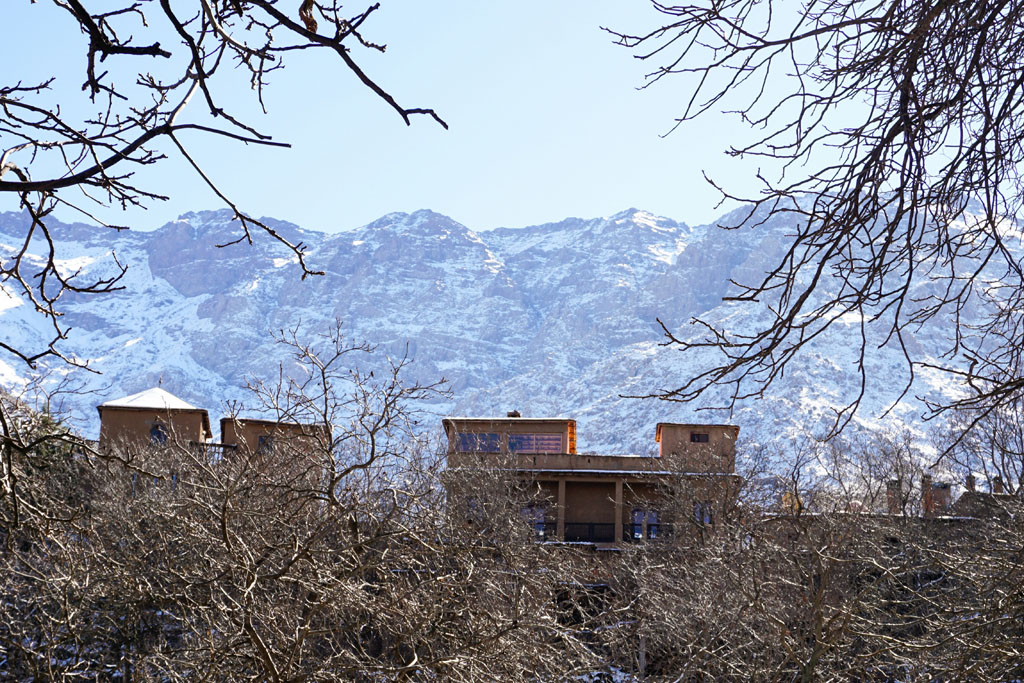
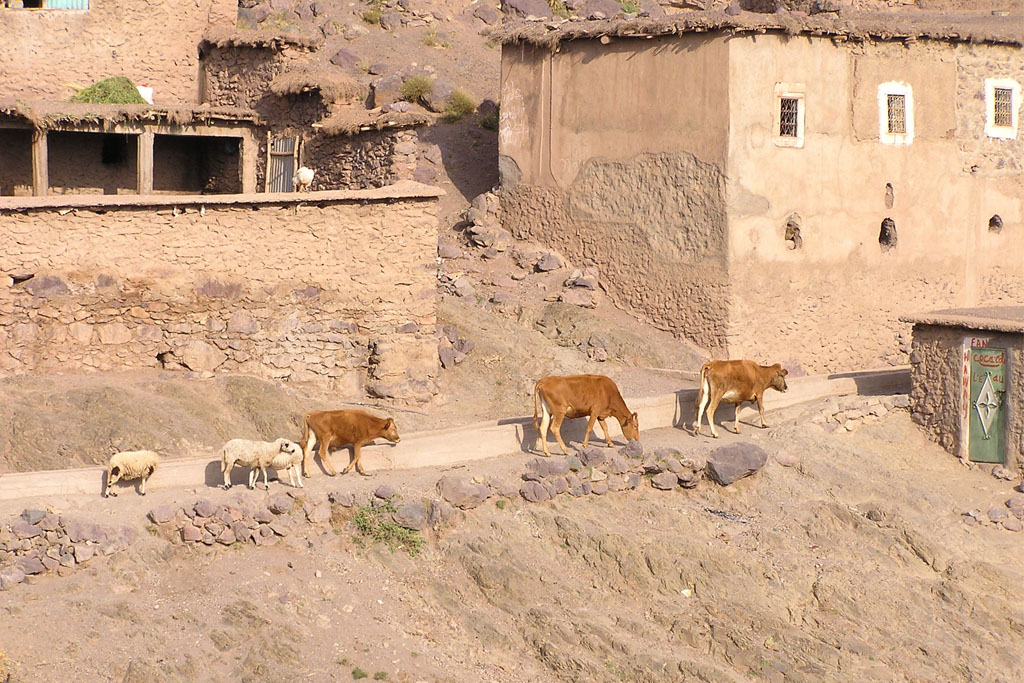
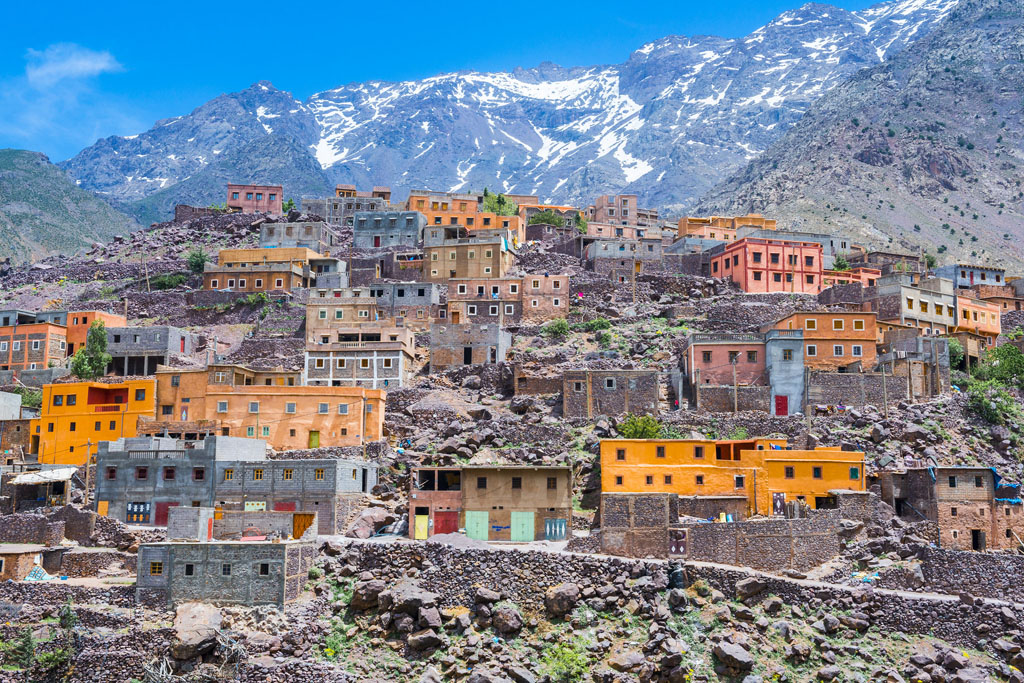
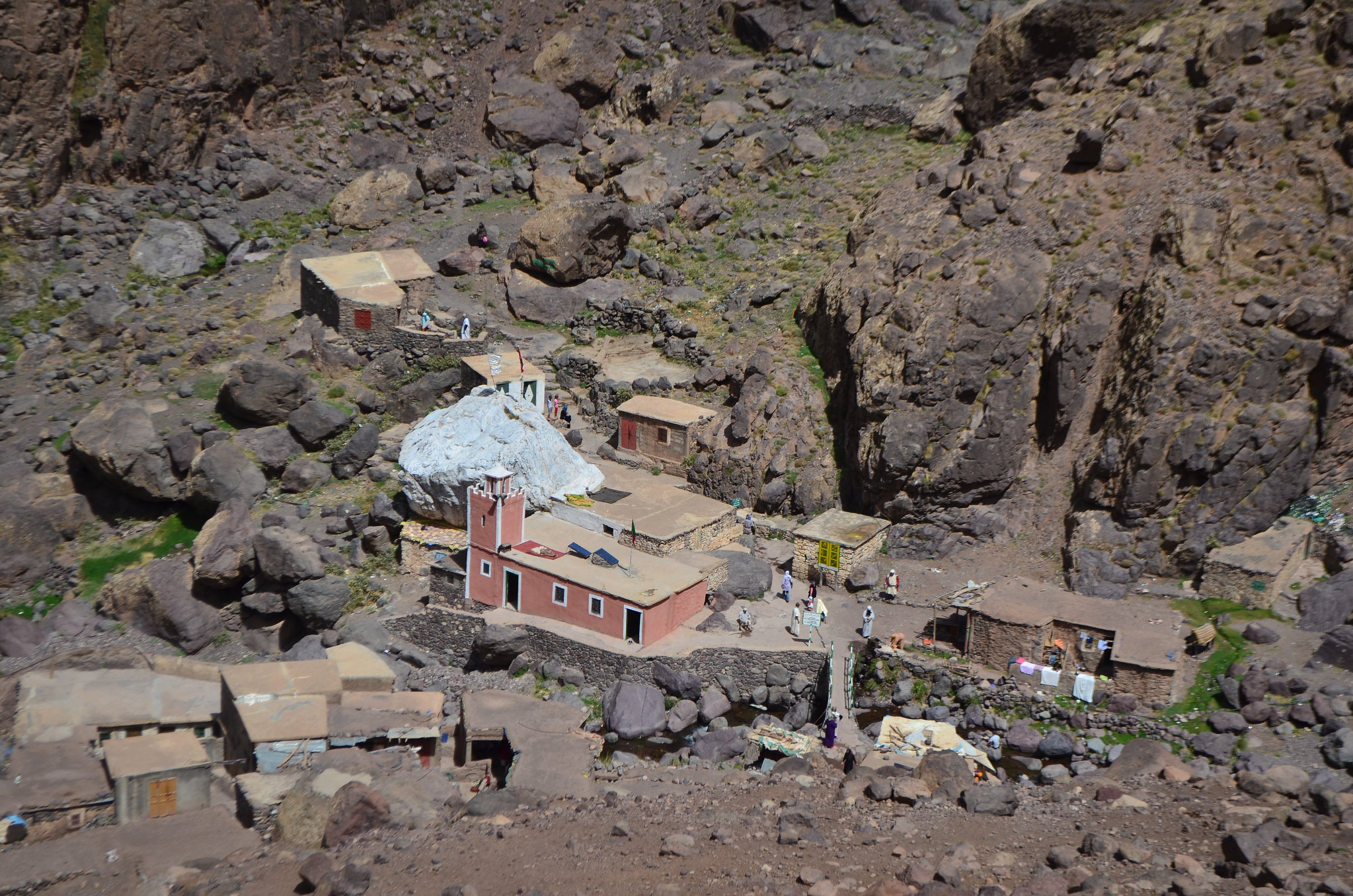
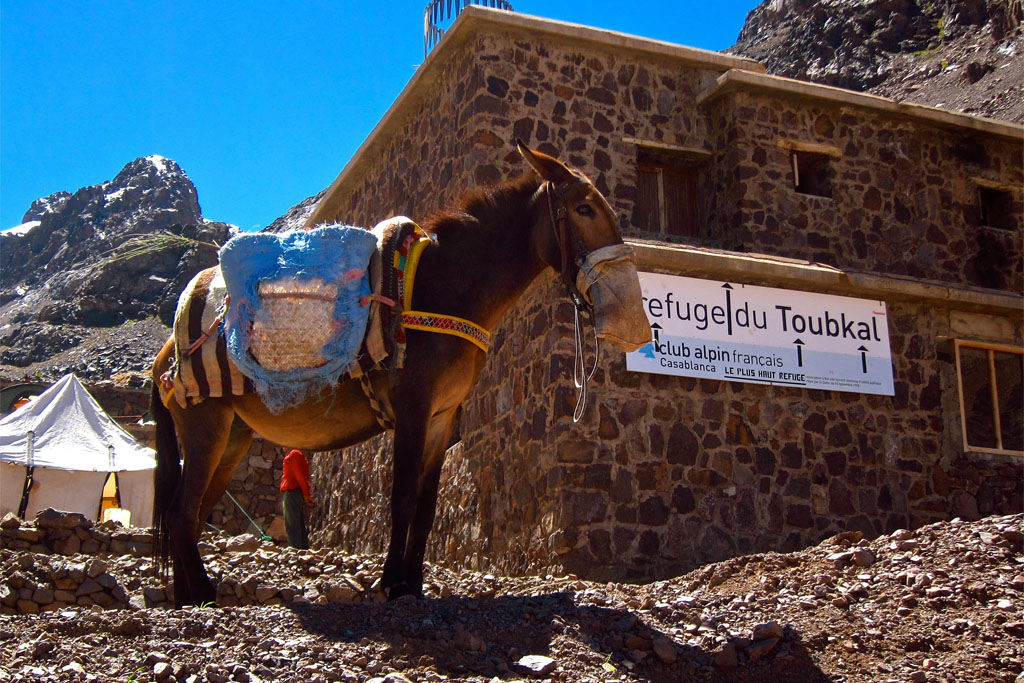
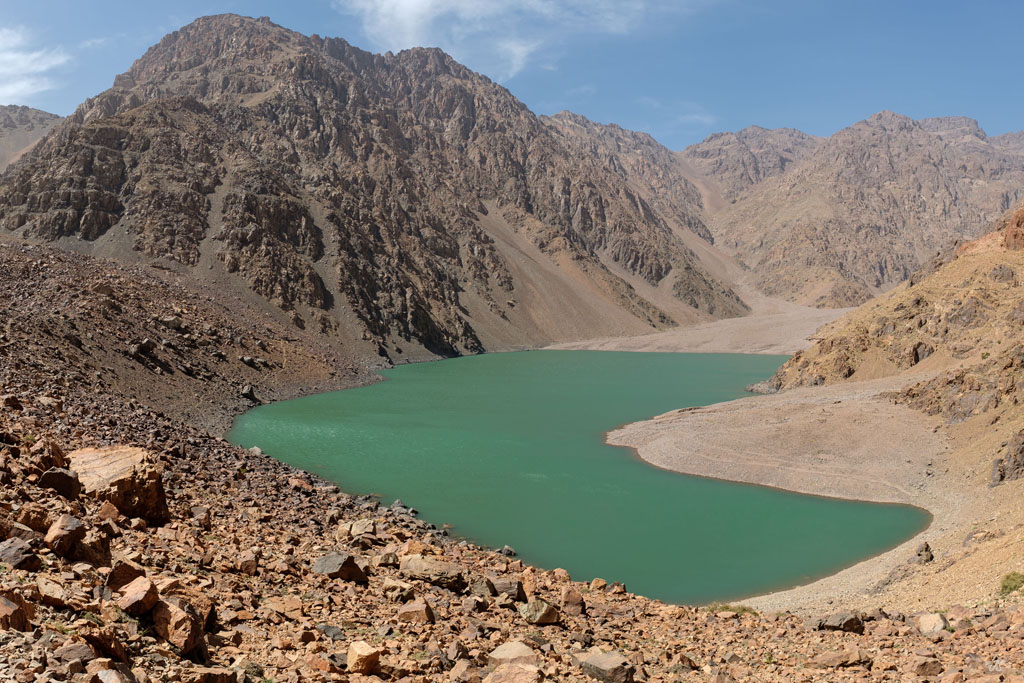


Ait Bouguemez Valley & Jbel M’Goun
Central High Atlas
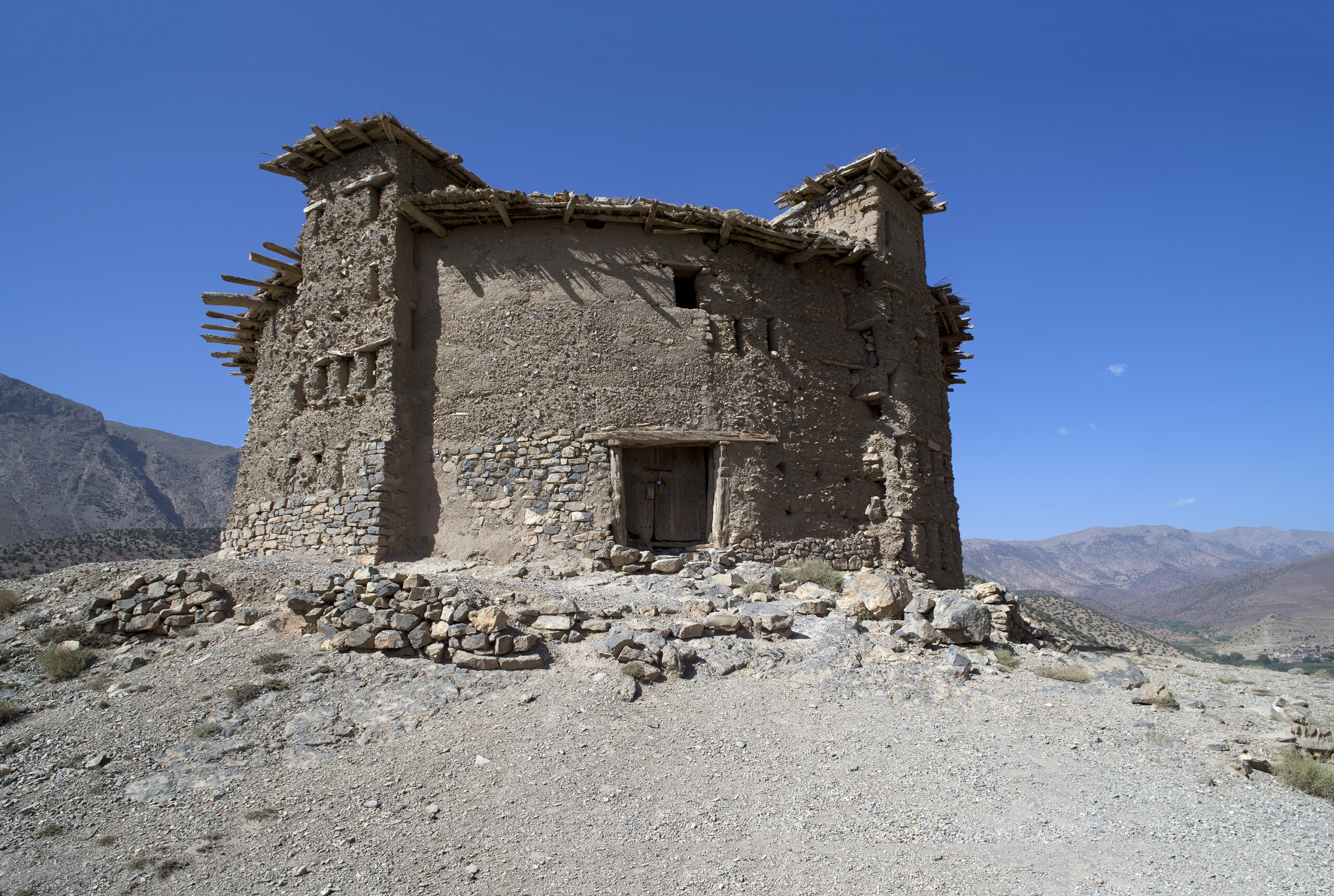
Sidi Moussa Granary
East of Agouti. Perched on the summit of a pointed hill, in the centre of the Ait Bouguemez valley, Sidi Moussa granary has benefited from a complete restoration and is on UNESCO’s World Heritage list.

Agouti
At the western extremity of the Aït Bouguemez valley. The first of the villages that line the valley, Agouti is located at 1,800 m. As an outpost of the Ait Bouguemez tribe, it once defended access to the high valley against rival tribes
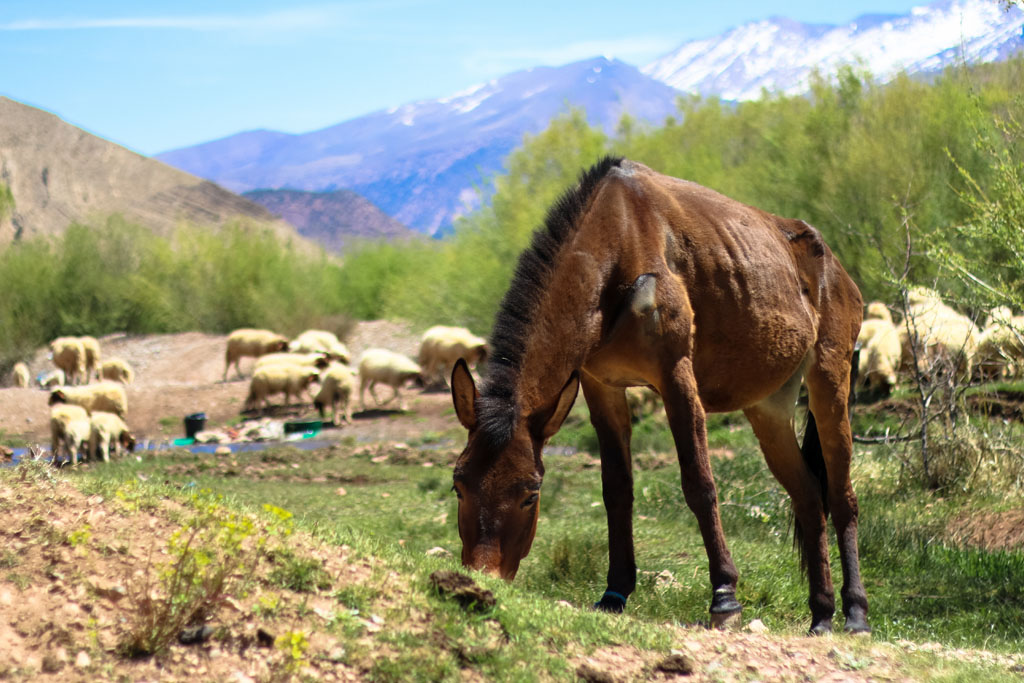
Ait Bou Oulli
From Agouti, a day trip can be made to the Ait Bou Oulli valley on mule-back or by four-wheel-drive vehicle. A sheer-sided track leads down into the valley, whose name means “the people who raise ewes”.

Zaouiat Oulemsi
Zaouiat Oulemsi is the last village in the Ait Bouguemez valley, which it overlooks from an altitude of 2,150 m. It consists of low, red-hued dry-stone houses. Here, the snowfall comes early and tends to be heavy
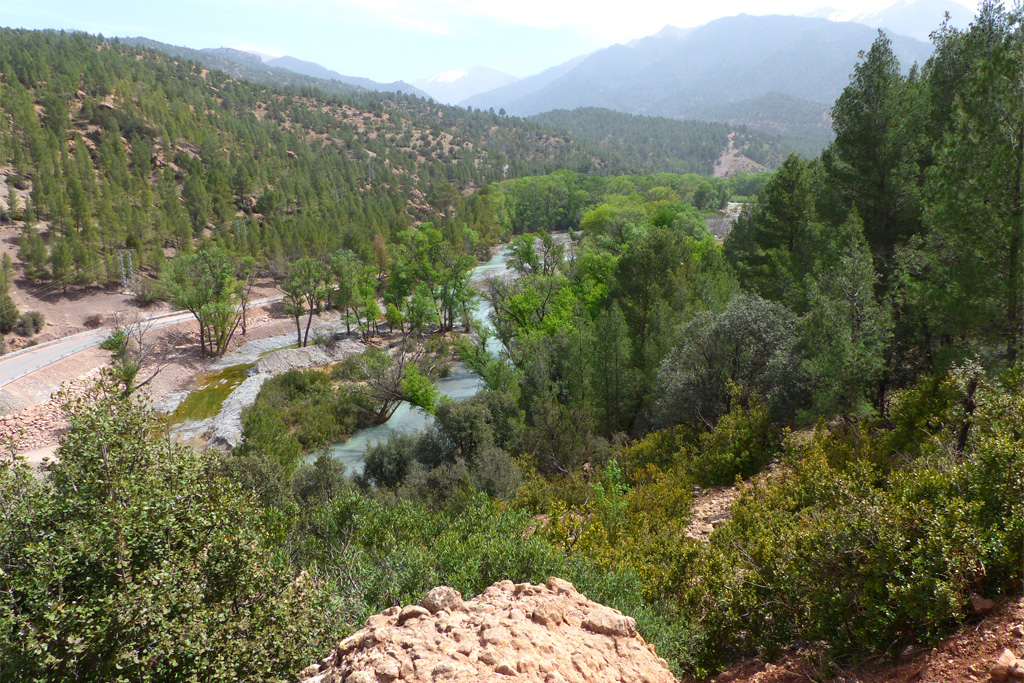
Zaouiat Ahansal
Zaouiat Ahansal, consisting of some old tighremts and the tomb of its founder, Saïd Ahansal, dates from the 14th century, when the marabout movement loomed large in the history of this mountain region.

Imilchil
The village of Imilchil is dominated by a sumptuously decorated kasbah. Its towers have a curious feature: the angles of the crenellation are set with finials resembling inverted cooking pots. This decorative device is also related to superstitious belief, as it gives protection against lightning and the “evil eye” and is a symbol of prosperity.
Berber People & Tribes
Berber Communities
Two out of every three Moroccans are, in cultural and linguistic terms, Berber. Thought to be the descendants of people of mixed origins including Oriental, Saharan and European. The Berbers settled in Morocco at different times, and they do not make up a homogeneous race. By finding refuge in mountainous regions, they survived several successive invasions those of the civilizations of the Mediterranean basin, of the Arabs, then, much later, those of the French and the Spaniards. The Berbers still speak several dialects and maintain distinct cultural traditions. They are renowned for their trading activities and for the strength of their tribal and family ties.
Although Berber tribal structure is complex, three groups, each with their own histories, can be identified. The Sanhaja, nomadic herdsmen originating from the south, inhabit the central and eastern High Atlas, the Middle Atlas and the Rif. They speak the dialects of the Tamazight group. The Masmouda, settled farmers, live mostly in the western High Atlas and the Anti-Atlas, and they speak the Chleuh dialect. It was a Masmoudian tribe that founded the Almohad empire in the 12th century. The Zenets are hunters and herdsmen who came from the East and settled in eastern Morocco. They speak the dialect of the Znatiya group. They founded the Merinid dynasty in the 13th century.

